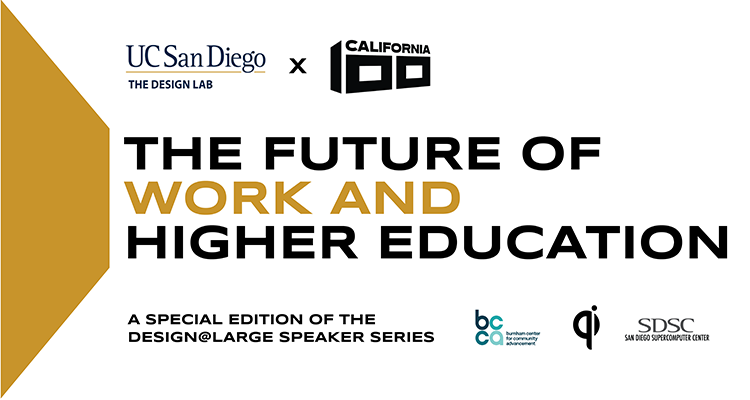
The UC San Diego Design Lab recently hosted Design@Large, a speaker series to showcase the ever-evolving, interdisciplinary nature of design in a real-world context. Workforce Partnership CEO, Peter Callstrom, served as a panelist for the last event: The Future of Work and Higher Education. He was joined by Dr. Elizabeth H. Simmons, executive vice chancellor of UC San Diego, Lenny Mendonca, chief economic and business advisor to Governor Gavin Newsom of California and senior partner emeritus of McKinsey & Company, and Dr. Zach Pardos, associate professor of education at UC Berkeley. Here are four “must-haves” for the intersection of work and higher education:
1. We must prioritize support for opportunity youth
“We have an opportunity youth crisis.”
– Peter Callstrom, CEO of the San Diego Workforce Partnership.
Opportunity youth are those age 16–24 who are not in school nor working. In 2020, more than 10% of San Diego County’s 401,000 youth ages 16–24 fell into this category. Disconnection is often the result of systemic inequities beyond young people’s control so it’s important that we continue to collect data, talk to opportunity youth and partner with them to create meaningful solutions. Reducing youth disconnection and the barriers to employment and education is critically important to the health of San Diego’s communities and economy.
2. The path from community college to four-year institutions to graduation must be clearer
“We need to build very intentional partnerships with the community colleges.”
– Dr. Elizabeth H. Simmons, executive vice chancellor of UC San Diego
Almost one third of University of California students are community college transfers. The policies that prioritize transfer student programs are beneficial for many reasons, including allowing for increased diversity in backgrounds and life experiences. But these students must be properly prepared to transfer, with a clear path and guidelines for finishing their degree programs at the four-year institution. Another way schools can support these students’ success is to make sure the coursework requirements are realistic and possible.
3. Partnerships are imperative to making sure students are being taught the skills employers need
“We need to get better at ensuring the skills that we’re providing people are matched with what employers are looking for.”
– Lenny Mendonca, chief economic and business advisor to Governor Gavin Newsom of California and senior partner emeritus of McKinsey & Company
Schools, including higher education and beginning with K-12, need to develop close working relationships with local employers so they can make sure they’re teaching students the skills employers need for a healthy economy. In turn, employers must keep educators informed on the changing needs that come with an ever-evolving market. After these skills are developed, employers need to hire based on skills and not only on degree acquisition.
4. The process of upskilling is evolving
“For everyone looking to pivot, are they going to be looking to public education to get that education, or are they going to look to private industry?”
– Dr. Zach Pardos, associate professor of education at UC Berkeley
More private educational platforms are being developed all the time, particularly for STEM subjects. There are options that include elements of adaptive learning and artificial intelligence that ass individual skills and quickly identify specific coursework that fills the student’s gaps. There are several values in taking the public education route, including volume of content and individual support, but education needs to use their resources to stay competitive.
